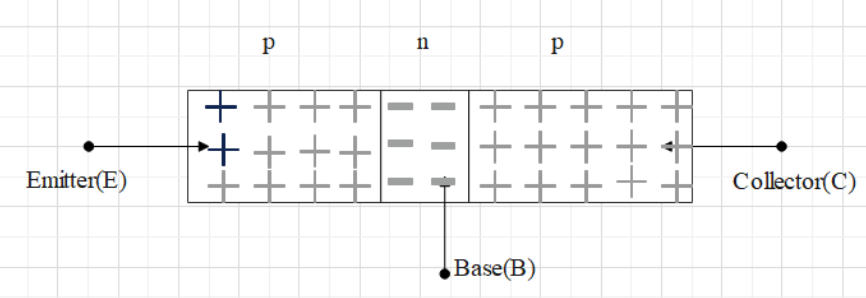
What is a transistor? Mention two uses of transistor.
Answer
580.2k+ views
Hint: Transistor is a three terminal semiconductor device. It is a basic component of integrated circuits (ICs) and it is widely used in electronics circuits for different operations. It controls the flow of current passing through it.
Complete answer step by step:
p-n-p transistor

n-p-n transistor

A transistor stands for ‘transfer (=trans) of resistor (=istor)’. It is a three layer semiconductor device where a P-type (or N-type) semiconductor material is sandwiched between two N-type (or P-type) semiconductor materials. If P-type semiconductor material is sandwiched between two N-type semiconductor materials then it is called NPN type transistor. If N-type semiconductor material is sandwiched between two P-type semiconductor materials then it is called a PNP type transistor. A transistor is generally made up of Silicon or germanium. Out of three terminals one terminal of the transistor is always common to input and output.
Uses of transistor:
i). Transistors are used as electronic switches.
ii). Transistors are used for amplification purposes.
Additional Information:
Different types of transistors are available in the market.
a). Phototransistors: Transistors in which current flow depends on the amount of light incident on it.
b). Bipolar Junction transistors (BJT): Provides high output current for small input current.
c). Field Effect Transistor (FET): These are voltage controlled devices. etc
Note: A transistor is a fundamental unit of all the electronics used in our daily life. Depending on the type of transistor it is used for different applications. It is similar to two diodes joined back to back. It controls voltage or current flowing through it.
Complete answer step by step:
p-n-p transistor

n-p-n transistor

A transistor stands for ‘transfer (=trans) of resistor (=istor)’. It is a three layer semiconductor device where a P-type (or N-type) semiconductor material is sandwiched between two N-type (or P-type) semiconductor materials. If P-type semiconductor material is sandwiched between two N-type semiconductor materials then it is called NPN type transistor. If N-type semiconductor material is sandwiched between two P-type semiconductor materials then it is called a PNP type transistor. A transistor is generally made up of Silicon or germanium. Out of three terminals one terminal of the transistor is always common to input and output.
Uses of transistor:
i). Transistors are used as electronic switches.
ii). Transistors are used for amplification purposes.
Additional Information:
Different types of transistors are available in the market.
a). Phototransistors: Transistors in which current flow depends on the amount of light incident on it.
b). Bipolar Junction transistors (BJT): Provides high output current for small input current.
c). Field Effect Transistor (FET): These are voltage controlled devices. etc
Note: A transistor is a fundamental unit of all the electronics used in our daily life. Depending on the type of transistor it is used for different applications. It is similar to two diodes joined back to back. It controls voltage or current flowing through it.
Recently Updated Pages
Master Class 12 Business Studies: Engaging Questions & Answers for Success

Master Class 12 Economics: Engaging Questions & Answers for Success

Master Class 12 English: Engaging Questions & Answers for Success

Master Class 12 Maths: Engaging Questions & Answers for Success

Master Class 12 Social Science: Engaging Questions & Answers for Success

Master Class 12 Chemistry: Engaging Questions & Answers for Success

Trending doubts
What are the major means of transport Explain each class 12 social science CBSE

Which are the Top 10 Largest Countries of the World?

Draw a labelled sketch of the human eye class 12 physics CBSE

How much time does it take to bleed after eating p class 12 biology CBSE

Explain sex determination in humans with line diag class 12 biology CBSE

Differentiate between homogeneous and heterogeneous class 12 chemistry CBSE




